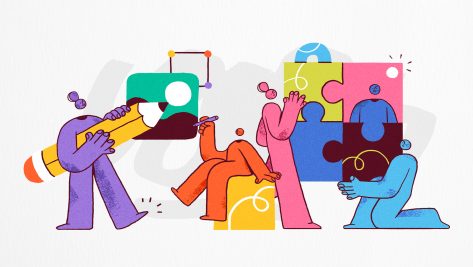If you’re reading this, chances are you’re a business executive committed to making a positive impact. Beyond merely ticking regulatory boxes or satisfying investors, you genuinely want to get things right. As the renowned Clayton Christensen once said, “Management is the most noble of professions if it’s practiced well.” Many of us are eager to embrace that ethos.
But, what if the key to positive impact lies in what you shouldn’t do? Social entrepreneurs and the ecosystems that support them have extensive experience getting positive change right… and wrong. In our new book, Promise, Pitfalls, and Potential of Social Entrepreneurship: Positive Change Unleashed, Sheila Cannon and I talk with social entrepreneurs to unpack these lessons.
The Hidden Cost of Caring: Managing Passion-Driven Teams
“Social entrepreneurship is a lonely path.” –Catalina Escobar, Fundación Juanfe
For any manager, leading a team that is passionate and committed to goals that align with their own convictions might seem like a dream come true. But is it? The reality is that pro-social leaders aren’t always the best people managers. They often face high levels of stress and burnout due to their intense commitment to their mission. Additionally, their teams can suffer from “citizen fatigue,” a form of burnout unique to those engaged in socially-driven work.
As noted by several of the social entrepreneurs we interviewed, taking care of one’s own well-being and having explicit strategies to support the well-being of the team is critical. If, as a business manager, you incorporate social and environmental impact concerns into your team’s work, don’t assume they’ll simply absorb the extra load just because the work itself is meaningful. Instead, it’s important to provide the necessary scaffolding and maintain a professional approach to talent management. This means actively managing workloads, offering support systems, and fostering an environment where the emotional burden of caring is acknowledged and managed effectively.
The Growth Trap: Why Bigger Isn’t Always the Path to Greater Impact
“It is one thing to grow your organization and it is a different thing to grow the impact.” – Rodrigo Baggio, Recode
In the traditional business world, growth typically means expanding the size of an organization to capture more revenue. However, as you incorporate environmental, social, and governance (ESG) perspectives into your business strategy, growth can go beyond size and profit. Social entrepreneurs know this firsthand: achieving greater impact might mean rethinking traditional growth strategies. Here are three approaches to growth:
- Scaling Up: This involves increasing organizational size and reach the traditional way. Often, scaling up has positive social/environmental impact on an organization and can lead to more positive impact, but it is not the end of the story.
- Scaling Out: This strategy uses collaboration to replicate successful models and practices across different regions and communities. It’s about spreading effective solutions through consulting, licensing, or franchising (whether for profit or not) to enable others to adopt your successful practices, thereby multiplying your impact.
- Scaling Wide: This focuses on driving systemic change by influencing policies, practices, and societal norms. It’s about creating a new normal that sustains the positive impact you aim to achieve, and setting off a ripple effect beyond the organization’s immediate operations and partners.
Growth is not solely about increasing organizational size. It’s about expanding influence and impact in ways that align with the organization’s social-change goals.
The Metrics Mirage: Measuring What Really Matters
“Measuring impact is often problematic. Because what is really important? You measure numbers of users but to what degree of use?” – Javier Pita, Navilens
There is no clearer indicator of greenwashing than empty words with no quantified targets or performance metrics. However, metrics and data can also become problematic when we overlook the crucial difference between what we aim to achieve (e.g., equal opportunities or a livable planet) and what we can actually measure (e.g., percentages of women in leadership or tons of CO2 emissions reduced).
Social entrepreneurs often face immense pressure to measure everything, leading to what we call the “Metrics Mirage” — the illusion that numbers alone can tell the whole story. On top of that, social entrepreneurs frequently struggle to conduct comprehensive measurements because of limited resources and capacity. There are three lenses through which to address this issue of measuring impact:
- Micro Level: Metrics at this level track specific outcomes, such as the number of beneficiaries or environmental benefits. This approach is crucial for day-to-day management but can sometimes miss the broader context and long-term implications.
- Meso Level: Impact measurement here serves as a tool for organizational learning and strategic development. It helps organizations identify strengths and weaknesses, guiding continuous improvement and adaptation.
- Macro Level: This level focuses on systemic changes, such as shifts in policy or cultural norms, which are often harder to quantify. For instance, Patagonia’s advocacy for environmental policy changes extends far beyond what traditional metrics would capture, illustrating the profound impact that is not easily measured by conventional means.
Not every organization needs to operate at all three levels. The first critical step is to determine which level of measurement is appropriate for your organization. In measurement, more does not always mean better. Ensuring that metrics are fit for purpose is key to meaningful impact assessment.
Breaking the Bubble: How to Build Meaningful Partnerships Beyond Comfort Zones
“Having this ecosystem helps a lot when you’re starting. […] when you grow, […] it’s more about finding your space in the middle of these nonprofit and for-profit spaces.” – João Magalhães, Code4All
Social entrepreneurs stand at the crossroads of different models, traditions, and ideologies – all while confronting some of the world’s most wicked problems. They struggle to map their own ecosystems and work within them, often feeling rejected by one part or another. There are three ways for social entrepreneurs to effectively manage these complex landscapes and build meaningful partnerships:
- Map Your Ecosystem: Identify all stakeholders, including allies, potential partners, and even opponents. Understand their roles, interests, and potential influence on the organization’s mission.
- Build Diverse Relationships: Foster relationships across different sectors and ideologies. Engage with businesses, government entities, non-profits, and community groups to build a robust support network.
- Focus on Additive Value: Consider the unique value the organization brings to the ecosystem, not as a competitive advantage but as a way to enrich and complete the ecosystem. The end goal should be to complement and enhance the collective impact.
Effective, positive change requires collaboration, even amongst those who are considered diametrically opposed in the corporate environment, such as competitors or even activist groups.
Social entrepreneurs and the ecosystems that support them have spent decades fostering positive change, leveraging various models, including for-profit and hybrid approaches. They are on the frontlines of positive change and learning directly from their experiences — both the successes and the missteps. Their experience provides invaluable insights for any business leader seeking to drive meaningful impact. By understanding what works and what doesn’t, it is possible to more effectively integrate social and environmental goals into the organization’s business strategy.
© IE Insights.











